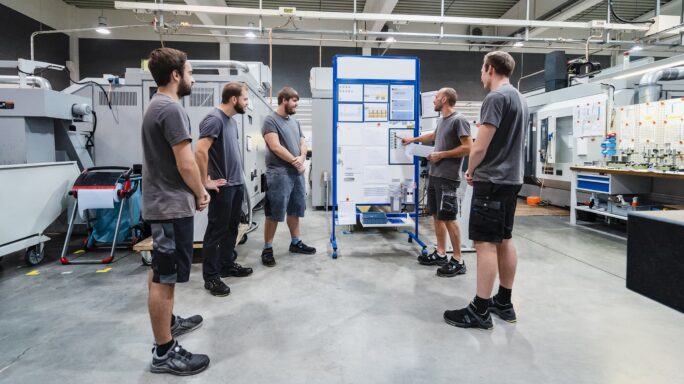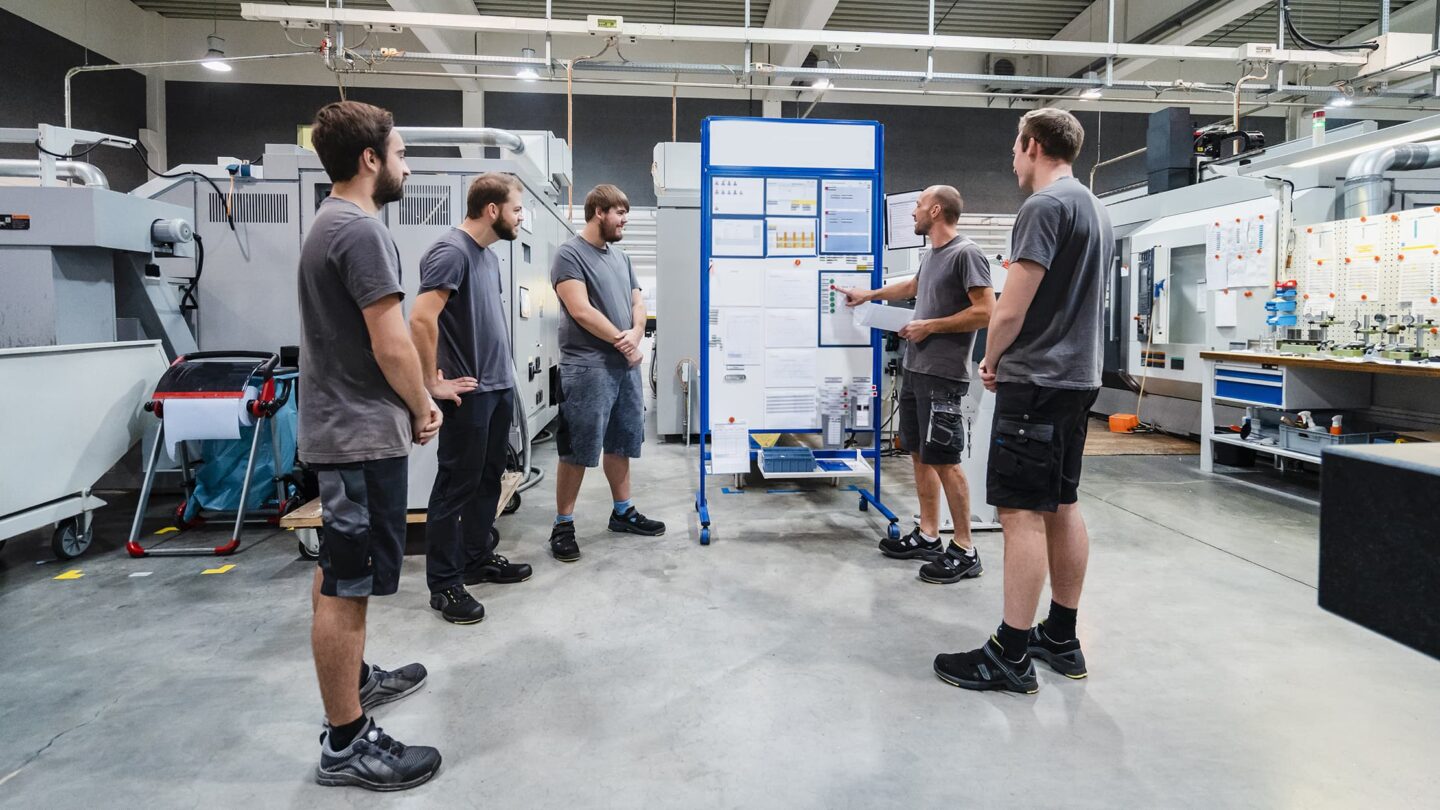Growth & Customers
Why cloud technology will attract a new generation of manufacturers
Want to attract millennials and Generation Z into your manufacturing firm? Learn how cloud technology will help.

With competition from the tech and financial industries, among others, manufacturing has had real challenges of attracting younger people into the industry.
But cloud technology could encourage a new generation of talent into the sector.
Read this article to find out how you can use cloud technology to attract younger people to work for your manufacturing business, and tackle the skills shortage.
Here’s what we cover:
What’s stopping millennials and Gen Z from pursuing manufacturing careers?
How cloud technology can attract millennials and Gen Z
Steps your business can take to start your cloud journey
Showcasing your firm and cloud ways of working to millennials and Gen Z
Final thoughts on cloud technology
What’s stopping millennials and Gen Z from pursuing manufacturing careers?
In a survey of 40,000 students from across the UK, young people rated tech and banking companies as the best potential employers.
The top priorities for young people are having a clear path for advancement, followed by professional training and development, then secure employment and future earnings.
Manufacturing is well-placed to deliver on all of these criteria.
But the research also revealed that young people care deeply about ‘softer’ aspects – such as company purpose, innovation, friendly work environment, respect for people and ability to make a difference, when considering a potential employer.
Companies that adhered to strong values, and created a strong employer brand, as well as providing fundamentals in terms of pay and benefits, were viewed most positively by young people.
Until recently, many manufacturers have focused on operational efficiencies and profit, but were less focused on areas deemed by some to be ‘fluffy’, such as employer branding and experience.
Shifting to a new strategic approach represents a significant organisational change, and may make some of your people feel uncomfortable or unsure.
But it is a necessary transformation, when the manufacturing industry suffers from an embedded image problem.
A recent poll found that fewer than 20% of parents would encourage their children to work in the industry – wrongly believing the sector is monotonous, low skilled and poorly paid.
In addition, many manufacturers admit they have been slow to adopt cloud technologies, digital tools and apps.
That might explain why manufacturing ranked in the bottom third of industries for opportunities to work from home during the pandemic, which is proving to be a critical benefit for workers in 2021.
How cloud technology can attract millennials and Gen Z
In 2020, the number of manufacturing firms buying cloud computing technologies almost doubled compared with 2018, as firms recognise the need for change.
These firms know that by adopting cloud technology, they can professionalise operations, support further remote working when appropriate, tackle misguided perceptions about the industry, accommodate cultural changes, and promote manufacturing as a career to young people.
Four ways the cloud can benefit your manufacturing business:
- Redirect spend into recruitment: Automate day-to-day transactions to save time and money. Redirect money saved through productivity gains into best-in-class recruitment.
- Sharpen focus on culture: Cut out manual processes to free up time for developing an attractive working environment.
- Professionalise your brand: Deliver better customer experiences through improved business processes.
- Promote collaboration: Foster team working and boost morale by giving your people access to data in the cloud.
Steps your business can take to start your cloud journey
To help you make the cloud journey process easier, here are six top tips to start the process:
1. Set up a dedicated project team
It’s likely that shifting to cloud technology will be outside core business activity for your manufacturing firm. It will be critical to keep your people on side with a change that could potentially disrupt jobs and ways of working.
Get buy-in from across all people, teams and departments likely to be affected by a change to ensure you capture requirements, objections and suggestions effectively.
It might make sense to delegate some responsibility to talented millennials and Gen Z – who are often tech savvy and well-placed to champion cloud adoption, as well as emerging technologies such as artificial intelligence (AI), augmented reality, and robotics.
This serves as a win for your business, and a development opportunity for young people.
2. Communicate with your people
Foster open communication, including listening and feedback as well as sharing updates. And involve your younger workers here.
3. Review the data you have
Use time logs and reports to make an objective view of the time you spend on repetitive administration.
Map processes and analyse data to see how and where you can make time and cost savings. Draw a line under selected manual or paper processes.
4. Create a clear vision and plan
Keep everyone on side by sharing goals, timelines and progress updates so people can see the benefits of the change. Work in phases to avoid overwhelming your teams.
5. Prioritise training
Deliver clear training to ensure maximum productivity and benefit from any new system.
6. Consider getting support
Sometimes it’s cheaper to hire an expert to help you than experience the ‘false economy’ of trying to cut corners. Your job is manufacturing; others deliver cloud transformation projects as an area of expertise.
Showcasing your firm and cloud ways of working to millennials and Gen Z
The global brands favoured by young people aren’t shy about promoting why they are such great employers.
Follow in their footsteps by showcasing all the benefits of working within your company:
- Your website/marketing: Showcase within your own marketing channels how you use any cloud and new technologies. Show that your business is a world away from the ‘dinosaurs’ dragging down perceptions of the industry.
- Employer branding: Work with your marketing and HR teams to sharpen your employer brand and messaging. Identify which aspects – including tech – make your business unique. Communicate this consistently in recruitment campaigns to attract young people to your company.
- Social media and review sites: Take ownership of your company profile on public channels such as LinkedIn and Glassdoor. Millions of talented young people consult these sites every day to assess potential employers, based on feedback from existing employees as well as the company itself.
- Get out there: Showcase your commitment to technology at popular job fairs, and on essential graduate websites such as Milkround.
Final thoughts on cloud technology
Millennials have already been hit hard by employment challenges during the pandemic.
But with the country opening up again, your manufacturing business may well soon have access to a pool of talented young people who are ready and motivated to work.
With this age group expected to make up 75% of the global workforce by 2025, according to a 2014 Deloitte study – and Generation Z starting to make its mark on the working world – now is the time to use cloud technology to tackle the skills shortage in manufacturing, and get ahead of the competition.







Ask the author a question or share your advice